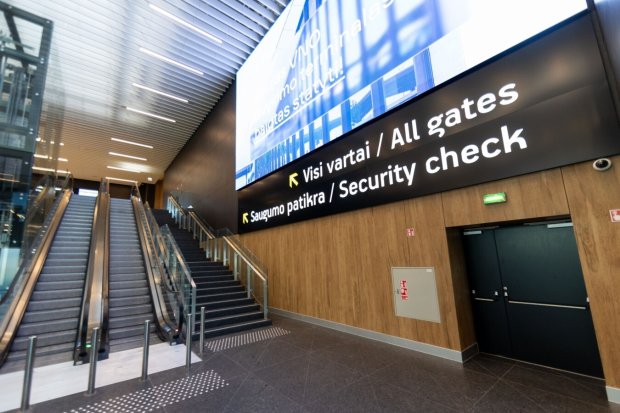Lithuania Among Europe’s Leaders: Air Connectivity with Major European Aviation and Economic Hubs Grew the Most

Lithuania has made significant strides in air connectivity compared to other European countries.
The latest report by Airports Council International Europe (ACI Europe) highlights that Lithuania improved its indirect connectivity score (travel via connecting airports) by an impressive 20%. This means that planning connecting journeys from Lithuania has become considerably more convenient compared to last year. Lithuania now ranks third in Europe for the growth of indirect connectivity.
“By consistently strengthening partnerships with traditional airlines, we are actively integrating into the network of Western European airports. Together with our airline partners, we continue to implement structural and qualitative changes in air connectivity, redrawing route maps and connecting Vilnius, Kaunas, and Palanga airports with Europe’s aviation, financial, and economic hubs. A perfect illustration is this summer’s aviation season – with nearly 100 destinations available across Lithuania’s airport network, including conveniently reachable hubs such as Frankfurt, Amsterdam, Helsinki, Reykjavik, and Copenhagen, which offer seamless onward connections to Asia and North America,” says Simonas Bartkus, CEO of Lithuanian Airports (LTOU).
According to Bartkus, a key factor driving the qualitative breakthrough in indirect connectivity has been the strategic decisions by traditional airlines to increase flight frequencies. For instance, the twice-daily flights between Vilnius and Amsterdam now offer much more convenient connections to airports on the U.S. West Coast. Travel opportunities are further enhanced by four daily flights between Vilnius and Copenhagen, operated by Scandinavian Airlines (SAS).
Growth in Both Direct and Indirect Connectivity
According to ACI Europe data, only about one-third of European countries have managed to regain their pre-pandemic 2019 connectivity levels. Lithuania, however, not only restored passenger volumes but also successfully pivoted toward Western markets by developing both direct and indirect connectivity. As a result, Lithuanian Airports is strengthening its leadership position in the Baltic region – last year the network served a record 6.6 million passengers.
The international report also reveals that Lithuania’s indirect connectivity increased by 5% compared to the pre-pandemic period, which experts interpret as a full recovery of this segment and a strong growth trend – a rare achievement across Europe.
When comparing 2024 and 2025 data, Lithuania recorded a 20% surge in indirect connectivity. This places the country 3rd out of 31 European nations in the ranking. Estonia ranks 7th, while Latvia is 15th.
At the same time, Lithuania’s direct connectivity also grew by 3% over the year. According to Bartkus, this was driven by the limited introduction of new routes by low-cost carriers, which are focusing on optimizing well-established and popular destinations in the Lithuanian market to maximize efficiency.
Progress Noticed by Lithuanian Travelers
The head of Lithuanian Airports also notes that the international report’s findings align with local survey results showing that Lithuanians highly value direct connections to key European aviation hubs (37%) and major EU economic centers (32%). Other important air travel quality criteria cited by residents include route diversity (23%) and convenient flight times (20%). In the same survey, 9 out of 10 Lithuanian residents stated that the quality of air connectivity in the country has improved over the past year.
ACI Europe experts point out that in 2025, most European countries have still not restored overall air connectivity indicators to pre-pandemic 2019 levels. Positive results were recorded by only nine EU countries and Iceland. The most significant progress was made by Greece, which improved its connectivity by 35%. Meanwhile, 21 countries remained in negative territory, with Sweden and Finland among those whose connectivity indices were most affected by recent years of turbulence.
The ACI Europe 2025 Airport Industry Connectivity Report, published this week, is the leading benchmark for assessing air connectivity across Europe. The report is based on a methodology and connectivity indexes developed by SEO Amsterdam Economics – the most comprehensive and reliable tool for measuring and comparing the connectivity levels of airports and countries throughout Europe and surrounding regions.


